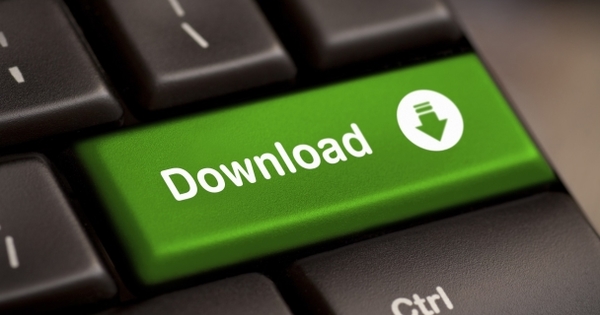Anyone who thinks that you can only operate Windows 10 with the mouse is wrong. Almost everything can be controlled in one way or another via Windows PowerShell. PowerShell is the big brother of the Command Prompt. In this article, we'll discuss the basics of this expert tool.
 How to keep your Windows 10 accounts safe December 18, 2020 14:12
How to keep your Windows 10 accounts safe December 18, 2020 14:12  How to use special characters in Word and Windows 10 December 18, 2020 12:12 PM
How to use special characters in Word and Windows 10 December 18, 2020 12:12 PM  How to recover your Windows 10 password December 16, 2020 12:12
How to recover your Windows 10 password December 16, 2020 12:12
Tip 1: Tip of the iceberg
To get straight to the point: after reading this article, you don't know everything about PowerShell yet. PowerShell is very advanced and can also be easily extended with new functions. This makes it impossible to give a complete overview of the possibilities and options. We will teach you everything about the basics of PowerShell, and after reading this article you will know how to use it and where you can get more information if you want to continue. We also discuss practical tricks that you can implement immediately.
PowerShell has been present in Windows for a while and has arrived in Windows 10 at version 5.0. Although we assume a Windows 10 system, the basics are the same on previous Windows versions.

Tip 2: PowerShell
If you've been involved in computer land for a while, you know the blinking cursor on the black screen. We are talking about the 'Command Prompt', this part is called the Command Prompt in Windows. Another name is 'cli', which in turn stands for 'command line interface'. Basically, PowerShell is like a command prompt on steroids. The commands that work through the standard Windows command prompt usually work in PowerShell as well, but there's a lot more you can do. Thanks to PowerShell, you can operate almost the entire operating system under the hood, without the need for a mouse. This can be done, for example, by creating scripts.

Tip 3: Shortcut as administrator
There are many ways to open a PowerShell. For example, search for PowerShell (or part of this word) in your start menu. Many people like a shortcut. You can easily create this, but it requires a small adjustment afterwards so that Powershell is always run as administrator. Right click on your desktop and choose New / Shortcut. Create a shortcut to PowerShell.exe and save it. Right click on the shortcut and get its properties. Go to the tab Shortcut, click on Advanced and put a check next to Run as administrator. This way you always open the shortcut as a computer administrator.

Tip 4: Windows key + X
If you use the Windows key+X key combination in Windows 10, you will see an advanced menu. Here you will find a direct reference to all important Windows components, such as your control panel, power options and more. You can also start a command prompt from here in safe mode (default) or as an administrator. This part is easy to replace with PowerShell. Right-click on your taskbar and request the properties. Open the tab Navigation and put a check next to Replace Command Prompt with Windows PowerShell in the (...). From now on, PowerShell is directly available via Windows key+X.
Tip 5: Administrator
The best way to start PowerShell is as a computer administrator (administrator). This gives you full rights over 'all' settings and adjustments you want to make. If you start a normal PowerShell, the chance of error messages is greater because, for example, there are too few rights to perform an operation. Because PowerShell has all rights in Administrator mode, you have to be extra careful. Experimenting indiscriminately with unknown PowerShell scripts from the Internet is just asking for trouble.
Tip 6: Commands
As with the command prompt, PowerShell allows you to issue all kinds of commands. Most commands that work in the Command Prompt can also be used in PowerShell. An example of this is the command ipconfig. This will give you comprehensive IP information of all your network adapters in both Command Prompt and PowerShell. There are also many commands that only work in PowerShell. An example of this is the command Get-NetAdapter, which gives you a brief overview of your network adapters, the type of adapter (Ethernet or WiFi) and the speed. For example, with this command we see that our WiFi network works at only 130 Mbit/s. This information can also be found somewhere in Windows, but if you know the command, PowerShell makes it a lot easier and faster.

Tip 7: Enter faster
Some commands are quite long. Fortunately, you can enter these quickly. Type part of the name, for example get-net , then press the Tab key one or more times until Get-NetAdapter appears. Your order will be completed automatically. You can type something after it (parameters, with many commands that is necessary) and confirm by pressing the Enter key. Thanks to the Tab key, you can quickly type in even the most difficult commands.

 How to keep your Windows 10 accounts safe December 18, 2020 14:12
How to keep your Windows 10 accounts safe December 18, 2020 14:12  How to use special characters in Word and Windows 10 December 18, 2020 12:12 PM
How to use special characters in Word and Windows 10 December 18, 2020 12:12 PM  How to recover your Windows 10 password December 16, 2020 12:12
How to recover your Windows 10 password December 16, 2020 12:12 
